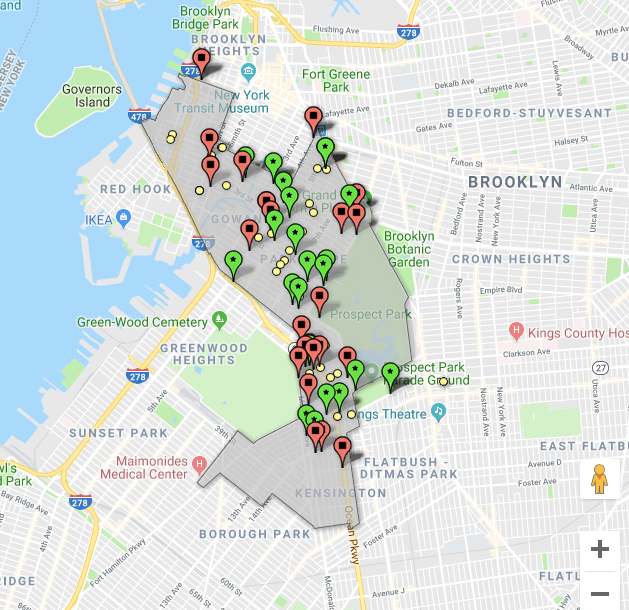Help Track Dangerous Intersections in Lander’s District 39

PARK SLOPE – Following the deadly crash last March at 5th Avenue and 9th Street that killed Abigail Blumenstein and Joshua Lew, and later resulted in the death of Ruthie Ann Miles’ unborn child, Council Member Brad Lander has launched an online traffic issue tracker to help make his district’s streets safer.

The District 39 Traffic Issues Reporting Tracker provides a link to the NYC Department of Transportation’s Complaint page where users can notify DOT about traffic-related problems in their neighborhood and areas that need improved safety measures. District 39 includes Cobble Hill, Carroll Gardens, Columbia Waterfront, Gowanus, Park Slope, Windsor Terrace, Borough Park, and Kensington. After officially registering a complaint with DOT, users will receive a tracking number from the agency.
After receiving the tracking number, constituents are instructed to then complete the DOT Complaint Form on Lander’s website so that his office can add the problem intersection to a map and track the status of the complaint. The tracker will provide updates on DOT’s responses to complaints, noting whether they are approved, resolved, pending, or denied.
In response to last year’s fatal incident in Park Slope, Lander introduced the Reckless Driver Accountability Act to help get dangerous drivers off the road. The Park Slope Street Safety Partnership also hosted a workshop at M.S. 51 where the Council Member and DOT officials listened to neighbors’ traffic concerns. The complaints collected from that meeting have been added to the tracker.
Lander is introducing the tracker to increase transparency of traffic/safety complaints reported to the city and to help locals better understand what projects DOT is working on, according to Genevieve Morton, Lander’s Communications Director.
“The purpose of the tracker is to allow constituents to see which locations have already been brought to DOT’s attention, how many complaints have been made, and what’s the status of the complaints,” Morton explained in an email.
DOT does not manage the tracker, she added, which is why it is necessary to officially file a complaint with the agency before completing the form on the Council Member’s website. “Our office is bridging the information gap between constituent requests and DOT responses, and providing them all in one place,” she said.
Click here to learn more about the District 39 Traffic Issues Reporting Tracker.




